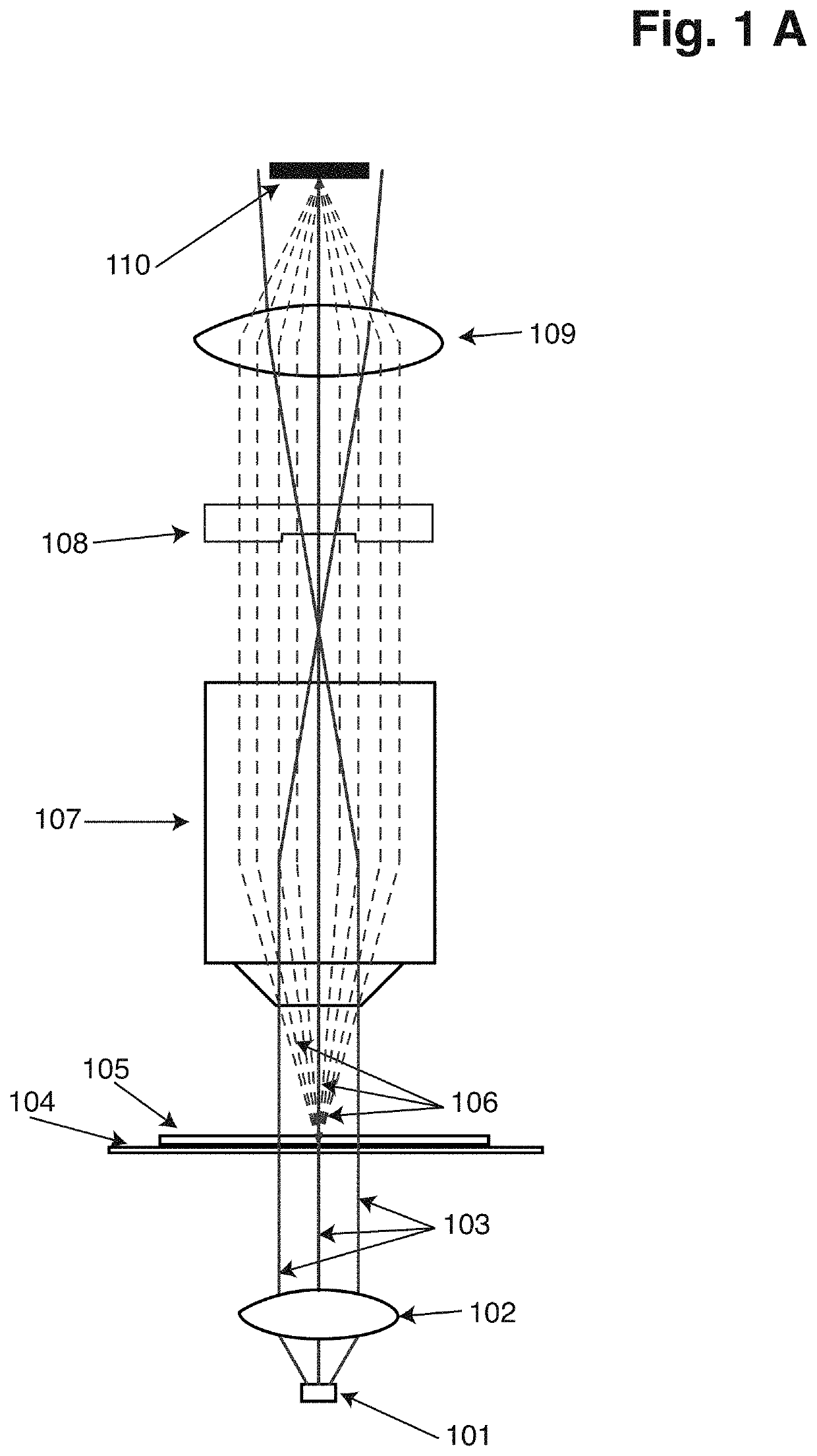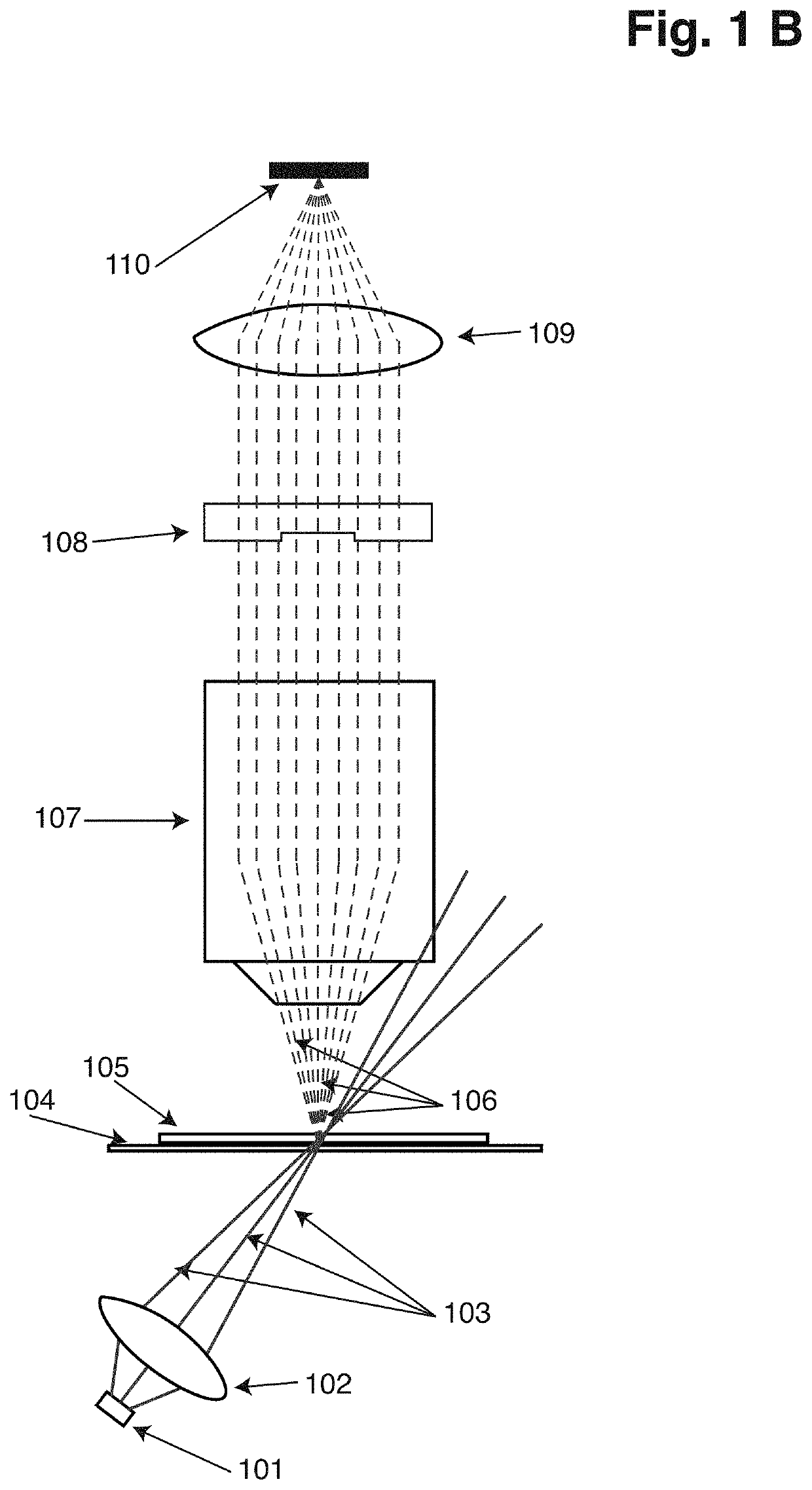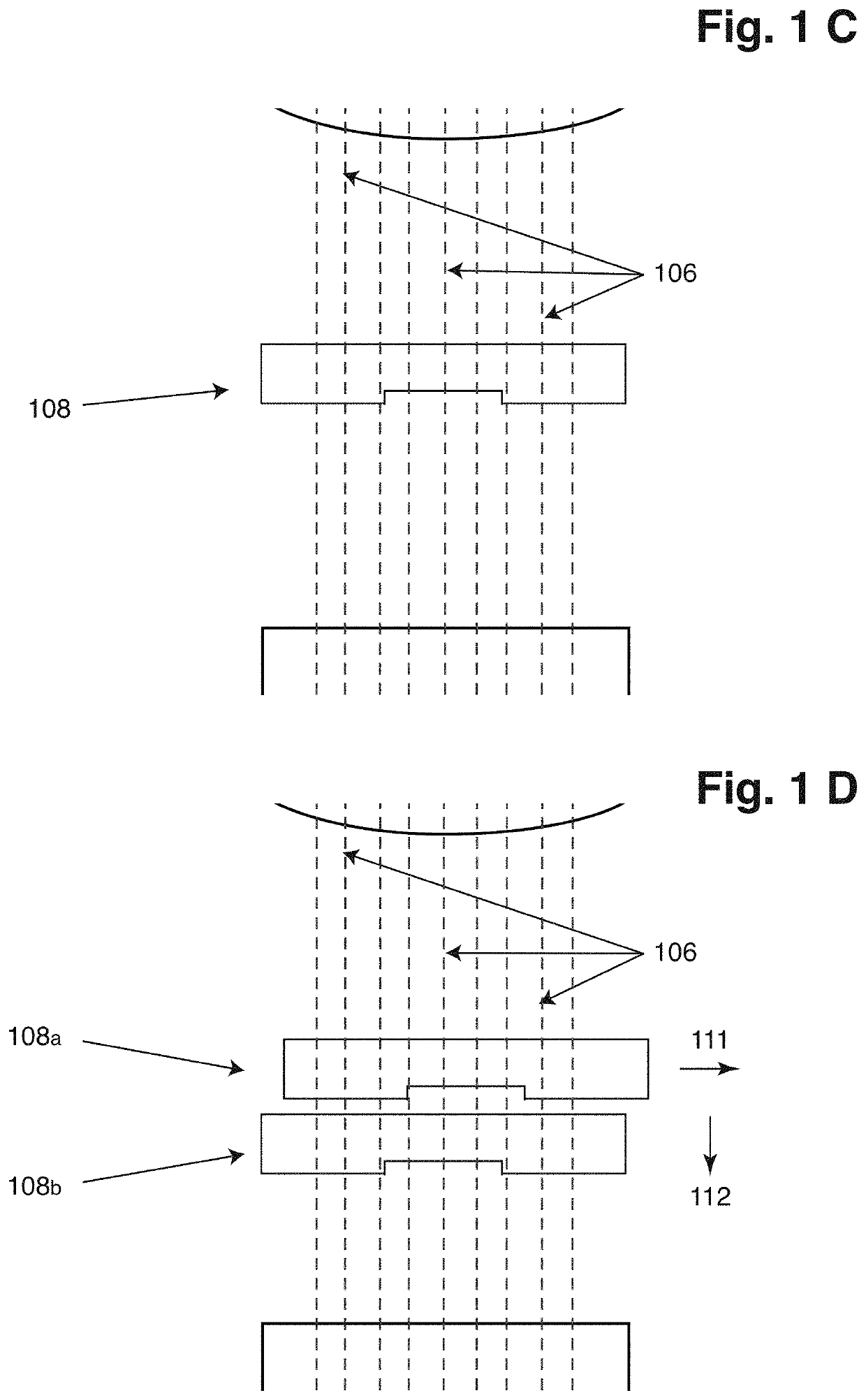Depicting of objects
- Summary
- Abstract
- Description
- Claims
- Application Information
AI Technical Summary
Benefits of technology
Problems solved by technology
Method used
Image
Examples
example 1
Imaging Conditions
[0197]An Image Cytometer according to present invention, generally suitable for detection of phase-shift of light, is schematically illustrated in FIGS. 1A, 1B, 1C and 1D. The sample is illuminated by a light source (101) emitting light in a direction substantially parallel to the main optical axis in FIG. 1A. However, in FIG. 1B the sample is illuminated by a light source (101) emitting light at an inclination to the main optical axis. The illumination light is passed through optical means (102), such that it forms a beam of light (103) which either is substantially collimated or focused on the sample compartment, depending on the nature of the arrangement of the image cytometer.
[0198]A holder for the sample (104) supports the sample compartment (105) containing the sample being analyzed. When the beam of illumination light enters the sample, usually majority of it passes through the sample without any interaction with the sample or particles or objects in the sam...
example 2
Modulation Means
[0203]FIG. 2 presents schematic illustrations of modulation means, usually preferred in embodiments of the present invention. The nature of the modulation produced by the modulation means is usually preferred to be such as phase-shift or attenuation of light. The schematic illustration of FIGS. 2A, 2B and 2C present a cross-section of modulation means but do not disclose detailed mechanical design of the modulation means. Generally, modulation means of circular, square or rectangular shape are preferred in embodiments of the present invention.
[0204]FIG. 2A illustrates modulations means as a solid block (200), through which it is assumed that light traverses, the modulation means comprising along its diagonal line three different regions of modulation (201) presented as bars of different shade along one edge of the modulation mean.
[0205]Similarly FIG. 2B illustrates modulation means (210) comprising along its diagonal line five different regions of modulation (211). F...
example 3
[0211]An image cytometer system according to the present invention was constructed, with a light source using Light Emitting Diode (LED) emitting light centred at about 365 nm in wavelength, arranged in alignment with the main optical axis of an image cytometer. The light illuminating the sample compartment was substantially collimated and homogenized, with respect to spatial intensity, using a lens system. The sample compartment comprised of two transparent glass wall parts, with U2OS cells growing on the bottom surface, forming a layer of adherent cells. The cell where fixed with formaldehyde and lysed with a solution containing Triton X-100. Prior to analysis the sample had been stained using a solution of DAPI, which since the cells had been lysed is expected to stain the nucleuses of the cells.
[0212]Light emitted from the sample was collected using a Nikon 4× objective (NA 0.2), forming a near parallel beam of light. The beam of light was focused, using a Nikon f-2...
PUM
 Login to View More
Login to View More Abstract
Description
Claims
Application Information
 Login to View More
Login to View More - R&D
- Intellectual Property
- Life Sciences
- Materials
- Tech Scout
- Unparalleled Data Quality
- Higher Quality Content
- 60% Fewer Hallucinations
Browse by: Latest US Patents, China's latest patents, Technical Efficacy Thesaurus, Application Domain, Technology Topic, Popular Technical Reports.
© 2025 PatSnap. All rights reserved.Legal|Privacy policy|Modern Slavery Act Transparency Statement|Sitemap|About US| Contact US: help@patsnap.com



